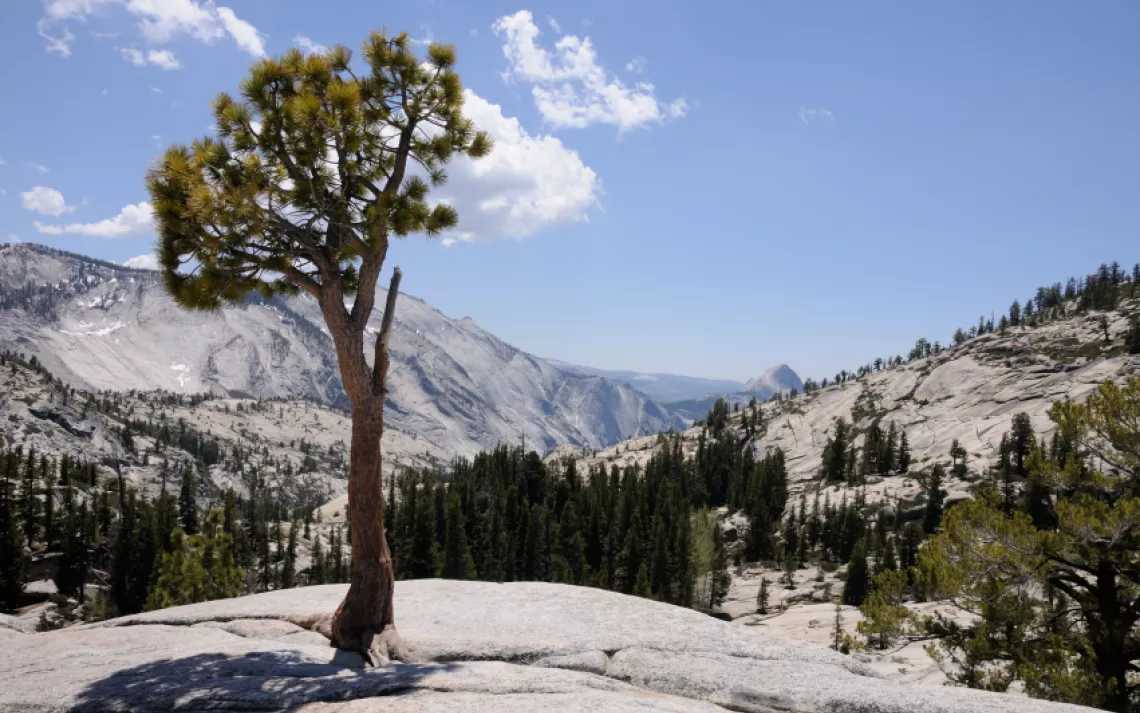
The recent "Frederick Law Olmsted Jr.: A Vision for the American West" symposium at Stanford University offered a crash course in the landscape architect's influential practice as well in the state of national and local parks. Presented by the National Association for Olmsted Parks--which promotes "the legacy of irreplaceable parks and landscapes that revitalize communities and enrich people's lives"--it was the West Coast counterpart to the earlier Olmsted symposium "Inspirations for the 21st Century," held at the National Building Museum in Washington, D.C.
First, it must be said--and was admitted at the conference--that many don't realize Frederick Law Olmsted had a son named Frederick Law Olmsted. FLO Sr. is, of course, responsible for Central Park, Niagara Falls, the 1893 World's Columbian Exposition in Chicago, Boston's Emerald Necklace, the Biltmore Estate in Asheville, North Carolina, and on and on. So, the symposia certainly did their part in letting people know that there's more than one Fred Olmsted.
Ethan Carr, author of Mission 66: Modernism and the National Park Dilemma, noted that when FLO Sr. was born, in 1822, there were 24 U.S. states; when Jr., a.k.a. Rick, was born, in 1870, there were 48. Next to preservation, both were concerned with "the people who use the parks"--which is reflected in the statement of purpose for the National Park Service that Rick crafted in 1916: "to conserve the scenery and the natural and historic objects and the wild life therein and to provide for the enjoyment of the same in such a manner and by such means as will leave them unimpaired for the enjoyment of future generations."
Helping to get those "future generations" into the parks are Milton Chen, a member of the NPS advisory board and a senior fellow at the George Lucas Educational Foundation, and Shaun Eyring, the NPS's chief of resource planning and compliance. Chen discussed initiatives to turn national parks into outdoor classrooms that "provide authentic place-based experiences," and Eyring outlined advances in park planning, design, and public engagement, including the student competition Parks for the People to resolve design problems at national parks and the mentorship program Designing the Parks for high school, college, and graduate students.
One might think it would be easy to give the government 75,000 acres to preserve in perpetuity, but according to Lucas St. Clair, president of his family's Elliotsville Plantation, "building a national park is like running a Senate campaign." St. Clair is the son of Burt's Bees cofounder Roxanne Quimby, who has been somewhat controversially trying to create a new national park on her land surround Mt. Katadhin, Maine, for decades. St. Clair spoke of balancing the "intersection of land and culture," meaning opening up part of his family's land tract, now called Katahdin Woods and Waters, to hunting, fishing, and snowmobiling--traditional uses that would be expressly prohibited on national park lands.
Major General Anthony L. Jackson (Ret.), director of California State Parks, and Tjiska Van Wyk, executive director of Jack London State Historic Park, are doing their best with an aging park system and a population that's increasingly urbanized and disconnected from nature, with Jackson hoping to involve veterans in park creation and upkeep, and Van Wyk to promote parks as "an alternative to gyms."
One of the most dynamic speakers was Carolyn Finney, an associate professor at the U.C. Berkeley College of Natural Resources and a member of the NPS advisory board. Finney's work, like that of the Olmsteds, focuses on "people and their relationship to space" and the "restorative powers of the landscape." She noted that FLO Sr. worked during a time of slavery, and FLO Jr. during one of segregation. Her new book, Black Faces, White Spaces: Reimagining the Relationship of African Americans to the Great Outdoors (University of North Carolina Press, June 2014), is a must-read for those who hope to make the parks matter to diverse populations.
Mary Scoonover, executive director of the Resources Legacy Fund and of Resources Law Group, wrapped things up with a compelling, fact-packed presentation how California's population is evolving and how Parks Forward, Google Trekker, and initiatives with Hispanic Youth Leadership Council and involving the state's urban rivers could help the youth of today be the park saviors of tomorrow.
Image of Olmsted Point, in Yosemite National Park, by iStockphoto/Lingkuo
 The Magazine of The Sierra Club
The Magazine of The Sierra Club